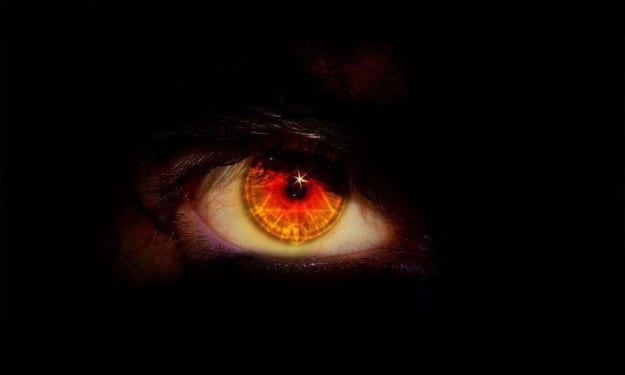It can detonate the "bomb" in the opponent's body, but it is the human who suffer.
Global science

Detonate a "bomb" in the air, and some bacteria can rely on this skill to destroy another bacteria. But after all, it was a war between microbes. Why would humans be the victims?
In our gut, some E. coli (E.coli) produce a toxin called colibactin. This toxin can destroy DNA in human cells, causing dangerous genetic damage. In other words, it is a genetic toxin.
For more than ten years, many scientists have studied colibactin toxin and found that it is closely related to cancer. Most colorectal cancer patients have strains of bacteria that produce this substance in their intestines. Moreover, the unique DNA damage caused by this toxin appears in cancer cells of colorectal cancer patients, like a personal signature, declaring to the world, "that's what I did."
In addition, many animal experiments have increased the belief that bacteria that produce colibactin toxins can promote tumor growth and the development of colorectal cancer by destroying specific genes. But the question is, why on earth do bacteria do this?
Recently, a team of researchers from Harvard University found that E. coli can rely on colibactin toxins to wake up sleeping viruses in other bacteria around them, allowing those bacteria to "explode" in place. If this strategy was originally used to suppress competitors, then some humans suffering from cancer may have just been accidentally injured.
The scientists published the new work in the journal Nature.
Wake up the neighbor's killer.
After the colibactin toxin enters the cell, it has the opportunity to break the DNA double strand and form a cross-link between the two DNA strands. As you may know, cell carcinogenesis is driven by specific genetic mutations. Severe DNA damage such as double-strand breaks and cross-links can lead to genomic instability and are more likely to produce tumors, as is the case with human cells damaged by colbactin toxins.
However, life has evolved on Earth for hundreds of millions of years, and there is always some way to deal with the destruction of DNA. In general, once major DNA damage occurs, cells initiate a repair mechanism called "SOS response": stop the usual cell division cycle and produce relief materials, such as some kind of DNA polymerase, that catalyze DNA replication in gaps and step up repair.
That's all, aren't the cells afraid of toxins?
Researchers at Harvard University want to test some bacteria that carry the virus to see what happens when they encounter toxins. So the team came up with a mild bacteriophage, the λ bacteriophage. After entering the bacteria, the virus will not directly use the resources there to replicate its own DNA and then kill the bacteria; instead, it inserts its own DNA into the bacterial DNA and lurks, replicating with the DNA replication of the host bacteria.
In other words, the form in which these viruses exist is usually a piece of genetic information integrated into the host DNA. They lie quietly, like walking corpses, and do not look like fierce killers at all.
Scientists first used such a virus to infect E. coli, which produces colibactin toxins. Then, Escherichia coli, which makes toxins and carries viruses, is cultured with other bacteria, and the latter is infected with the same virus and becomes the focus of the researchers. It turned out that mild bacteriophages (viruses), which could have been flat in these bacteria, awakened to become real killers, like virulent bacteriophages, leading to the cleavage of bacteria.
After the bacteria break, a large number of replicated viruses run outside and can invade more bacteria and continue to cause damage. So, what woke up the virus?
The team believes that after entering the bacteria, the colibactin toxin produced by E. coli uses the bacteria 'own DNA repair mechanism, the SOS response (SOS Response), to turn on the lytic replication of the virus (DNA replication independent of the bacterial host itself), making it impossible for other bacteria that are neighbors of E. coli to survive. By contrast, bacteria that are not infected with the virus are also harmed by colibactin toxins, but rarely have fatal consequences.
Professor Emily Balskus, who led the study, said the SOS response is a signal for viruses to wake up from sleep, explode their hosts and look for new targets. In other words, if the bacterial DNA is not severely damaged, the SOS response will not be triggered to repair the DNA;, but when the colibactin toxin appears, the bacterial DNA is damaged, and the repair mechanism is activated, giving the killer the opportunity to awaken the virus.
Scientists have noticed that the SOS response involves a protein called RecA, which plays an important role in DNA repair, but not just that. The process of awakening of the λ bacteriophage is regulated by a repressor protein cI. When a large number of cI works normally, the bacteriophage is more likely to sleep. However, SOS response will inactivate cI protein, and this process is regulated by RecA protein.
Therefore, it is likely that the RecA protein awakens the bacteriophage. Experiments have also shown that when the gene expressing RecA is deleted, it will be very difficult for E. coli, which produces colibactin toxin, to wake up the virus and blow up the bacteria.
It's hard for bacteria to get a fatal blow. what about people?
Of course, it is not easy for Escherichia coli to rely on colibactin toxin to launch these attacks.
If it wants to attack bacteria, there is no latent virus in the body, and there is a lack of "bombs" that can detonate. In fact, the team also found in early experiments that although colibactin toxins have the ability to destroy DNA, they are not fatal to many bacteria.
One of the main reasons may be that the chemical nature of the toxin itself is very unstable and is easily degraded. As a result, until now, humans have not successfully isolated this substance from bacteria, but only rely on a variety of indirect means to track its footprints and piece together its molecular structure.
As a result, colibactin toxins are likely to be broken down before they can cause irreparable and fatal damage to bacteria.
And some microbes also have active skills to break down the toxin. The team that published the study targeted a resistance gene that encodes a protein that neutralizes colibactin toxins produced by many strains. Scientists have found that adding exogenous DNA can also protect bacteria from toxins.
And because of its fragile chemistry, colibactin may be more suitable for short-range attacks. University of Florida researcher Michael Dougherty (Michael Dougherty) said: "this effect may be more likely when bacteria form biofilms (biofilm) on some surfaces because there are trillions of bacteria stacked on top of each other."
Humans suspected of being accidentally injured by bacteria need to continue to study this "biochemical weapon" of bacteria in order to better control the damage it causes to the human body.






Comments
There are no comments for this story
Be the first to respond and start the conversation.